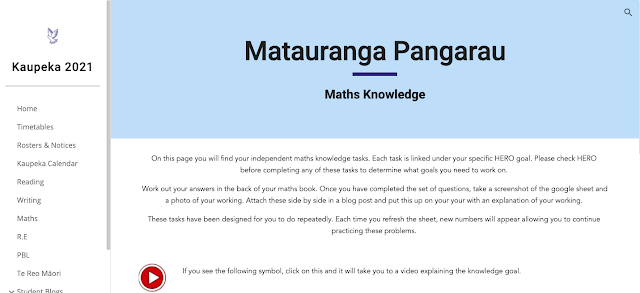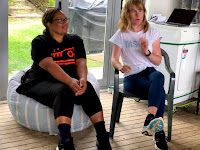Maths Q + A
Recently I watched a Q & A session on tvnzondemand (link to episode), specifically relating to mathematics teaching in New Zealand. The Q & A session delved into our current mathematics data including;
- Where New Zealand is sitting in comparison to the world
- The decline in our maths results over the last 20 years
The Q & A also looked in to our methods of teaching and how they have changed.
On the Q & A there was a group of panellists, ranging from researchers in mathematics, a teacher and principal, DMIC founder Bobbie Hunter and NZEI President Liam Rutherford.
It was quite shocking to see how far New Zealand has slipped in their mathematics over the last 20 years, especially compared to other countries. It made me think about what we have been doing over the last 20 years - what is not working and what are other countries doing to bring their mathematics achievement up.
An alarming statistic that stood out to me as a Year 7/8 teacher was that only 45% of our students are at or above the current curriculum level . In addition to this, according to TIMSS (trends in mathematics and statistics), New Zealand is tracking lower than Australia, England and Singapore to name a few. This got me thinking, what can we do that other countries have in place to lift our mathematics achievement?
The panellists all has differing views on the ways we should teach mathematics, however, they were all agreed on one thing - this is a big issue in education in New Zealand.
Both the traditional approach to teaching mathematics was considered and was the preferred way of teaching by some of the panellists - where students were 'drilled' into learning their mathematics by rote learning. Practice and repetition was highly valued (this reminded me of Malcolm Gladwells 10,000 rule).
In opposition to this was a more open approach to mathematics, this discussion was particularly led by Bobbie Hunter where students learn through open ended mathematics problems that relate more to real life problems. Students are encouraged to talk about their mathematical thinking, struggle with problems and test out different methods - this suggests a more creative inquiry based approach to teaching mathematics.
Watching this Q & A gave me the opportunity to reflect on mathematics in my current school and what we can do to raise our mathematics achievement. I have recently joined the school 'maths team' and I am looking forward to reflecting on our current programme and making changes based off research.
One aspect we are looking at changing at our school is through using DMIC. I'm not sure if this is the direction we will go in, but listening to Bobbie Hunter's perception of how mathematics should be taught was interesting. What stood out to me in the Q & A was that we need to prepare our students for their futures. They need to be solving problems that will relate to their lives later on, they need to see the relevance of mathematics in their life and they need to be confidence approaching problems that they may not know how to solve - grit and perseverance are important skills to develop.
However, on the flip side, I also see the importance of students knowing their basic facts, time tables, place value, decimals and fractions - they need this mathematics knowledge concrete in their head, so when they go to solve real life problems, they have a solid kete of knowledge to use.
I see both sides to the panel and am keen to merge them together to create a project that will facilitate the teaching of mathematics knowledge to our students.
Maths Reading Reflection
In addition to the Q & A, I have been reading Mathematical Mindsets by Jo Boaler. I have read the first three chapters; The Brain and Mathematical Learning, The Power of Mistakes and Struggle and The Creativity and Beauty in Mathematics. I have found this book to be very interesting, it highlights the importance of mindset within mathematics. We need to grow this growth mindset (Carol Dweck), it stipulates that everyone is capable of being a mathematician and we need to make this clear to our learners. The language we use, the problems we give them, the way we praise and the way we discus mathematics is very important.
The book states, mistakes and struggle are both essential to mathematics learning - these need to be explained and valued when learning math. This is how we learn. The science behind this research is further explained in the book, which brings a very compelling argument to the way we teach mathematics.
Creativity within mathematics is also highlighted. The importance of not only looking at maths in terms of numbers, but also through patterns. Mathematics is all around us, for example in nature - this is discussed further in the book.
What I liked about this book was that it challenged the way mathematics is taught currently at school. It stated that we are not teaching students enough of the mathematics they need for their futures - we need to look at it differently.
Furthermore, I also liked how it talked about the creative elements to mathematics - so often mathematics is thought of as either right/wrong. I thought this way for a long time as well, however there are many different elements to mathematics and we need to start looking at it in a different light. I liked that this book stated its fine to be wrong or even to not know the answer - talking and discussion with others is how we learn.
Most of all, my favourite part of the book was mindset. I strongly believe a growth mindset is essential to success. We need to teach students about belief, grit, perseverance, determination and the importance of these elements - all students need to know they can succeed.
In regards to my MIT project, I need to consider my next steps and think about what direction I want to take it. I know that mathematics knowledge is incredibly important to develop within our students - the context in which I teach this needs to be investigated.
My next piece of research will be through looking into the Prismatic Journal (Practice and Research in Statistics and Mathematics Education) to see their recommendations.












































